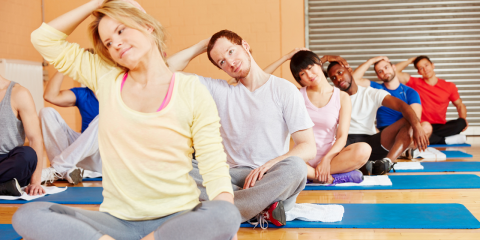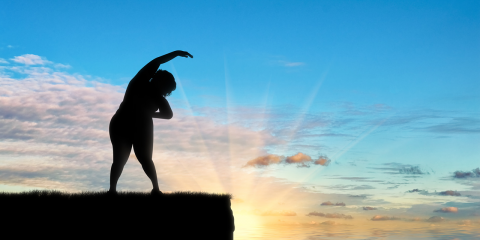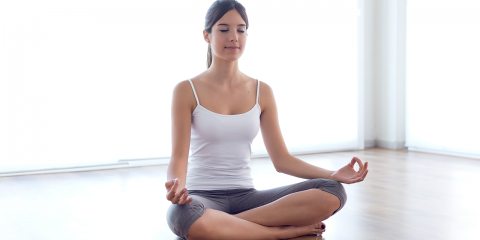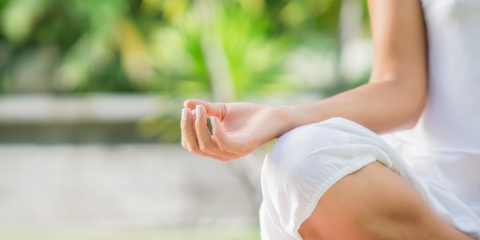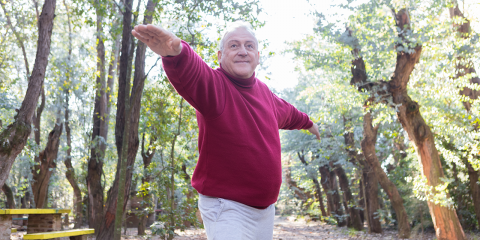Yoga is a 3500 year old, perhaps even older, practice. It is believed that communities refusing to urbanize started the practice of yoga, moving into the forest of the Indus valley to reconnect with nature.
Yoga can appear as a set of physical activities in which people change from one pose to another. These physical movements (called asana’s) have an important place in yoga practice, but yoga practice is much more than these physical movements. Yoga practice aims to bring together the mind, body, and breathing. The word yoga is etymologically derived from the word yuj, which means bringing together/coming together in the Sanskrit language.
Yoga brings us to the present, calming the body's desire to constantly move and be occupied. It helps calm the modern day hectic mind that is overworked between daily stresses, rushes and routines. It is not a religion, a belief, or a cult. By helping us learning to remain calm, stay in the moment, and look inwards; yoga allows us to find the questions, the answers, happiness, and solutions within ourselves.
Yoga's benefits on human physical and mental health have been scientifically demonstrated. Yoga helps the person to feel better by reducing stress, increasing wellbeing and reducing the sympathetic nervous system predominance. Physically it increases muscle strength, flexibility and the respiratory capacity of the lungs.
Yoga can help with:
- Depression
- Anxiety
- Insomnia
- Migraine
- Fibromyalgia
- Myofascial pain
- Chronic fatigue syndrome
- Obsessive compulsive disorder
- PTSD (Post Traumatic Stress Disorder)
- Eating disorders
- Weight problems
- Cognitive function losses
- Forgetfulness
- Aging
- Cardiovascular diseases
- Lower back pain
- Neck pain
- Back pain
- Postural disorders
- Irritable bowel syndrome
- Asthma
- Autoimmune diseases
- Inflammatory bowel diseases
- Rheumatic diseases
- Polycystic ovary syndrome
- Hypercholesterolemia
There are many different types of yoga:
Hatha yoga
This is the most common and well known type of yoga. The practices combine awareness, breathing, and the physical movements (asanas). The hatha yoga practice has increasing levels of difficulties. Depending on the physical and experiential status of a person, one can adapt the asanas. Quite contrary to the social media, practicing the movements mindfully without harming yourself are more important than doing a headstand.
Yin yoga: This is a calmer, less active and more meditative yoga than Hatha yoga and does not require as much effort and physical strength. The movements target the main connective issue of the body: the fascia. The fascia is found through out the body, it envelops the bones, the muscles, the vessels, the nerves and the lymphatic channels. One can soften the fascia by staying in these positions 3-5 minutes. Staying still allows becoming calm, almost like in meditation, and to look inside and befriend yourself. Crying and emotional outbursts are common in Yin yoga classes. Patients with chronic fatigue syndrome, fibromyalgia and depression will find attending yin yoga classes will be easier and tolerable. Yin yoga can be a good starting place for those who are new to yoga.
Vinyasa: A type of yoga created by a more flowing, dance-like rhythmic version of the asanas used in Hatha yoga.
Yoga therapy (Vini yoga): A type of calm and relaxing yoga that is specifically adapted to the person and is easy on the joints. Viniyoga practice includes gradual repetition of movements in coordination with breathing.
Restorative yoga: This is a restorative and healing yoga practice that contributes to the body's self-healing process. One stays in certain positions for as long as 10-15 minutes using pillows, bolsters, blankets and other aids. The props help to relax completely.
Ashtanga: A type of yoga practice developed by Pattabhi Jois, which has pre-determined sequences that require more physical strength and experience compared to other types of yoga. In Mysore-style lessons, one completes the practice at his/her pace under the supervision of experienced teachers.
Kundalini yoga: A dynamic type of yoga that combines dynamic breathing techniques with repetitive movements.
Bikram yoga: Yoga practiced at 40 C degree heated spaces. The practice is done in the same way all over the world.
I want to practice yoga, what should I do?
There are many large and small yoga centers in many districts. You can reach them through an Internet search. The place you choose should either be close to your home or your work. Otherwise you will possibly give up or won’t want to go after 4-5 times.
First, start with calmer, less physical strength requiring lessons, like yoga therapy or yin yoga. After 2-3 lessons, join simpler lessons, called yoga I or beginner lessons. As you grow strong and your physical abilities increases, you will up your practice towards higher difficulty levels while observing the effects on your body, your mind and your mood. The important thing while practicing is knowing your boundaries and not causing bodily harm. Compare yourself with others and try to do the movements like 'them', you will immediately become one of many yoga veterans in the yoga community.


